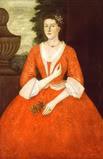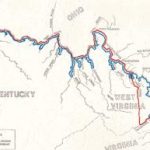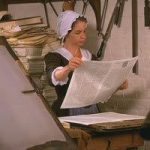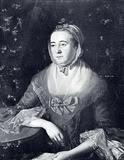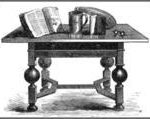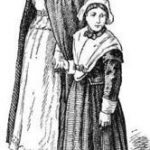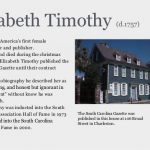Loyalist in the American Revolution
Not all printers, nor all women printers, were on the patriot side. As the war of words began to heat up, one who was pro-British had to flee Boston under the protection of the evacuating British troops. She was Margaret Draper, who had taken charge of the country’s oldest newspaper, the Massachusetts Gazette and Boston News Letter, in mid-1774.
Margaret was the granddaughter of Bartholomew Green, an early printer and publisher of the Boston News Letter. She married her cousin, Richard Draper, whose father had apprenticed under Green and had been taken into the business.
Richard Draper was the King’s printer in Massachusetts, and the publisher of the Massachusetts Gazette and Boston Weekly News Letter, the oldest English newspaper in the Americas. John Howe, who was born in Boston, Massachusetts Bay Colony, in 1754, probably began his apprenticeship as a printer to Richard Draper in either 1766 or 1767.
As Richard Draper was known to be a frail and sickly man, John Howe probably witnessed and wrote the article about the Boston Tea Party that appeared in the December 23, 1773 issue. Less than six months later, Richard Draper died on June 5, 1774, leaving the paper in the hands of his widow, Margaret Draper.
Richard Draper had formed a partnership with John Boyle a month before his death. However, Margaret Draper soon ended this partnership (in August 1774), because Boyle did not share her loyalist sympathies. She published the paper by herself after August 11, 1774.
The Massachusetts Gazette and Boston News Letter was considered a Tory paper (loyal to the British), but actually carried articles and letters on both sides of the issue. But under Margaret Draper, the publication became less balanced and carried vehement defenses of the Intolerable Acts, attacks on the patriot press, and warnings that rebellion would result in defeat.
On April 19, 1775, the Revolutionary War began when the British forces raided inland from Boston to Concord “to destroy a Magazine of Military Stores deposited there.” When the raid broke into a firefight, the “Troops had above Fifty killed, and many more wounded.”
In the April 20, 1775, issue of the Massachusetts Gazette and Boston Weekly News Letter, a short article appeared that briefly described the battle, and — a day or more later — a broadside was published that reported on the Battles of Lexington and Concord at greater length. Both were quite likely written and printed by John Howe, who would have been just a few months short of his 21st birthday.
After the Battle of Lexington and Concord, news of the event quickly spread to the other colonies and American patriots came in great numbers to lay siege to Boston. On June 17, 1775, the American forces seized a hill across the Charles river to the north of Boston in Charlestown and began building fortifications upon it from which they would be able to fire upon the town and harbor.
In the morning light, a British ship in the harbor, seeing the fortifications being constructed on the hill, began firing on the hill. Soon, British troops were ferried from Boston to Charlestown, where they charged up and took the hill, although at an enormous cost in lives.
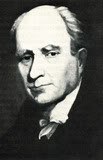
Image: John Howe
John Howe witnessed, wrote and printed the broadside describing the Battle of Bunker Hill. In later years, he described his experiences at the battle to his youngest son, Joseph, in which he watched as General Sir William Howe led the final bayonet charge up the hill “with the bullets flying through the tails of his coat.” After the battle, John told of aiding “a young officer whose leg had been amputated and who he cured of a raging fever by letting him drink a bucket of cold water.”
Margaret Draper continued to print the Massachusetts Gazette and Boston Weekly News Letter until September 7, 1775, when she appears to have had some trouble, because no issues were published from September 14 to October 6, 1775.
John Howe, although he was just completing his apprenticeship, became Margaret Draper’s new partner, and he was listed as the publisher from October 13, 1775, (the day before his 21st birthday, when his apprenticeship was completed) until the paper’s final issue on February 22, 1776.
On March 5, 1776, American forces seized control of Dorchester Heights, a hill south of Boston, with a commanding view of Boston harbor. Realizing that taking the hill would be too costly, the British decided to evacuate Boston of all British forces and loyalists.
Margaret Draper had only been able to publish her paper irregularly since the battle of Lexington and Concord, and on March 6, 1776, she left for Halifax, Nova Scotia, with the departing British troops. Margaret then moved to England, where she filed for government compensation for her losses in America. She was in poor health when she arrived in England at nearly 50 years of age, and she lived there on a pension from the British government.
SOURCES
Loyalists or Tories
John Howe – Loyalist
